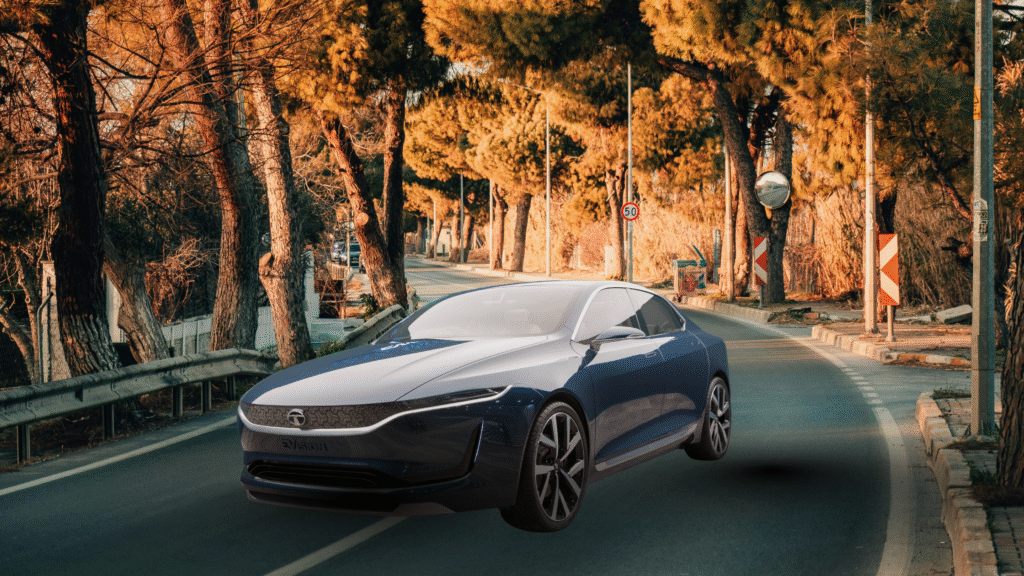“Tata Motors has demerged into separate Commercial Vehicle (CV) and Passenger Vehicle (PV + JLR) entities. The stock plunged ~40% on technical adjustment. Learn what this means for shareholders, timelines, valuation, and prospects.”
Tata Motors Demerger 2025: A Game-Changing Restructure (And Why The Stock ‘Crash’ Isn’t What It Seems)
The recent Tata Motors share demerger has grabbed headlines and sent pulses racing across the investor community. On 14 October 2025, the markets witnessed a dramatic ~40% drop in Tata Motors’ share price. But before panic sets in, it’s important to understand that fall was largely not about collapse — it was a technical adjustment due to the spin-off of the commercial vehicle (CV) business. (India Today)
Here’s a detailed walkthrough of what’s going on, what investors should watch out for, and where things might go from here.
What Exactly Happened? Demerger Breakdown
The Split
- Tata Motors has now split into two separately listed entities:
• Tata Motors Passenger Vehicles (TMPV / PV + JLR) — handling its passenger car, electric vehicle and Jaguar Land Rover operations (NDTV Profit)
• Tata Motors Commercial Vehicles (TMLCV / CV) — the newly carved-out trucking & bus business (HDFC Sky) - The demerger is effective October 1, and October 14, 2025 was the record date. Shareholders on that date receive one share of the CV entity for each Tata Motors share held. (NDTV Profit)
- The CV unit is expected to be listed on the NSE/BSE sometime in November (or shortly thereafter), pending regulatory and exchange approvals. (NDTV Profit)
- The remaining business (PV + JLR) will retain the new name Tata Motors Passenger Vehicles Ltd (TMPV). (NDTV Profit)
Why the ~40% Drop? It’s Mostly Technical
When the CV business was spun off, its value was peeled off from the Tata Motors share price. As a result:
- Tata Motors shares opened around Rs 399 (or Rs 400 depending on exchange) the next trading session — down from ~Rs 660 prior to spin-off — reflecting the removal of the CV business value. (India Today)
- That’s not a loss to shareholders — the value hasn’t disappeared; it’s just been reallocated into two separate stocks. (The Times of India)
- The adjustment stage included a pre-open special price discovery session to set the ex-CV price. After the adjustment, Tata Motors shares rose ~4% intra-day. (Moneycontrol)
Implications for Shareholders & Investors
What You Own Now
If you held Tata Motors shares before the record date:
- You will now hold shares in both entities — one in the passenger vehicle entity and one in the CV entity — in exact proportion (1 share in CV for every 1 share previously held). (Nirman Broking)
- No dilution should occur — your total ownership value is split across two stocks, not reduced. (Nirman Broking)
Valuation & Future Potential
- Based on the drop, the implied value of the CV business works out to ~Rs 260.75 per share (difference between the pre-demerger price and the ex-CV price). (The Economic Times)
- Analysts and brokerages are modeling and valuing the two separate businesses differently:
• The CV business is likely to benefit from infrastructure demand, logistics growth, and possibly a deal to acquire Iveco (which is expected to bring scale and global reach). (HDFC Sky)
• The PV + JLR business will now focus more tightly on electric vehicles, design innovation, global markets, and premium car strategies. (NDTV Profit)
• Some brokerages (e.g. Nomura) are projecting potential growth in CV in H2 FY26 due to tailwinds like the reduction in GST from 28% to 18% on some CVs. (Goodreturns) - Over time, the market may re-rate each business independently, leading to value unlocking if one outperforms. (Nirman Broking)
Risks & Uncertainties
- Listing delays: The CV business still needs regulatory approvals and exchange listing clearance. (NDTV Profit)
- Volatility as the market digests the separation, with potential mispricings in the short term. (Nirman Broking)
- Performance divergence: If one entity underperforms, your overall return will depend heavily on its success.
- Global and macro risks: JLR remains exposed to global auto trends, currency risks, supply chain, etc.
What Investors Should Watch Next
| Parameter / Event | Why It’s Important |
|---|---|
| CV unit listing date & opening price | Determines how the market values the spun-off business in real trading |
| Quarterly earnings of both entities | Separately reported numbers will reveal real strengths and weaknesses |
| Strategic moves / M&A (e.g. Iveco deal execution) | For CV, that could be a major value driver |
| Margins, order pipeline, capital allocation | Each business must justify independent capital use |
| Market sentiment and re-rating trend | Which entity commands a premium in investor ey |
Yes, the ~40% plunge in Tata Motors’ share price looked dramatic — but it largely reflects a technical reallocation rather than a collapse in value. What’s happening is a historic restructuring that lays the ground for clearer focus, sharper competition, and more transparent valuation.
For long-term investors, this presents an interesting opportunity: instead of holding a conglomerate with mixed businesses, you now get two pure-play stocks — one in commercial vehicles, one in passenger & luxury vehicles. How those two perform independently will determine if this restructuring truly unlocks value.
If you like, I can prepare a stock sensitivity model showing possible values of both entities over 1–3 years, or a guide on when to buy/sell post-listing. Do you want me to do that?
